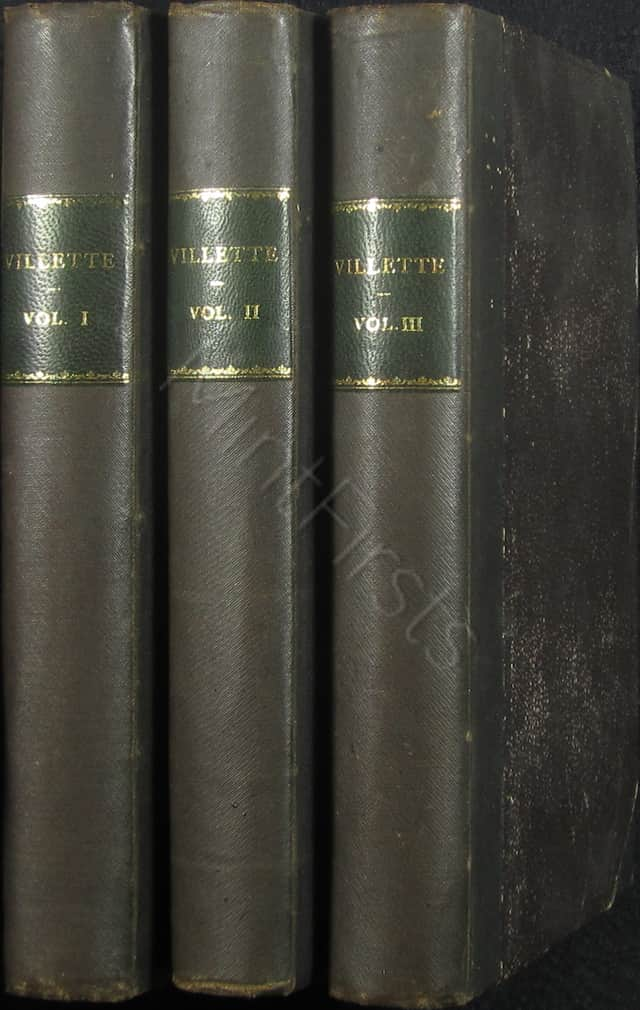Established
2004
Relaunched
2024
Our booksHow we tradeAbout usCredits & thanksYour account
- Home page
- Our books
- How we trade
- About us
- Credits & thanks
- Your account
- Your cart
MENU
Villette
First edition of Charlotte Brontë's Villette

Currer Bell ⦗Charlotte Brontë, 1816–1855⦘
First edition. 3 vols. 8vos. Vol. 1: Pp. [iv], 324, [12, ads]. Vol. 2: [iv], 319, [1]. Vol. 3: [iv], 350, [1]. Quarter-bound contemporary black cloth, over pebble-grain paper boards; with gilt titles on dark green morocco labels to spines; light green endpapers. No half-titles called for. With the publisher's 12 page catalogue to rear of vol. 1 in its earliest state dated January, 1853.
With the paper stamp of Fohkien Printing Office, Amoy [China], to paste-down endpapers and graceful, contemporary signatures to title pages, marginal tear to p.3/4 of vol. 1, not affecting text, hinges starting in places, marginal pencil jottings to a vol. 3 leaf. Internally bright and clean. A nice, fresh set, overall.
The author's third novel, a semi-autobiographical account of her time spent at finishing school in Brussels, and subsequently as a governess, saddled with the burden of unrequited love. An acute psychological study of loneliness and isolation, it was acclaimed by George Eliot as "a still more wonderful book than Jane Eyre," and by Virginia Woolf as "Brontë's finest novel." The two love interests are partially modelled on M. Constantin Héger – the boarding school's proprietor – and George Murray Smith, Brontë's publisher and one-time suitor.
[Parrish 95; Sadleir 349; Smith 6; Wolff 828.]
edition
first edition
format
hardback
scarcity
scarce
publisher
Smith, Elder & Co.
published in
London
publication year
1853
volumes
3
height × width
19.5 × 13 cm
genre
literary fiction
language
English
binding style
half cloth
binding state
contemporary binding, joints starting
condition
very good
GBP£ 2,500
EUR€ 2,920
USD$ 3,340
ref.6C8 89U